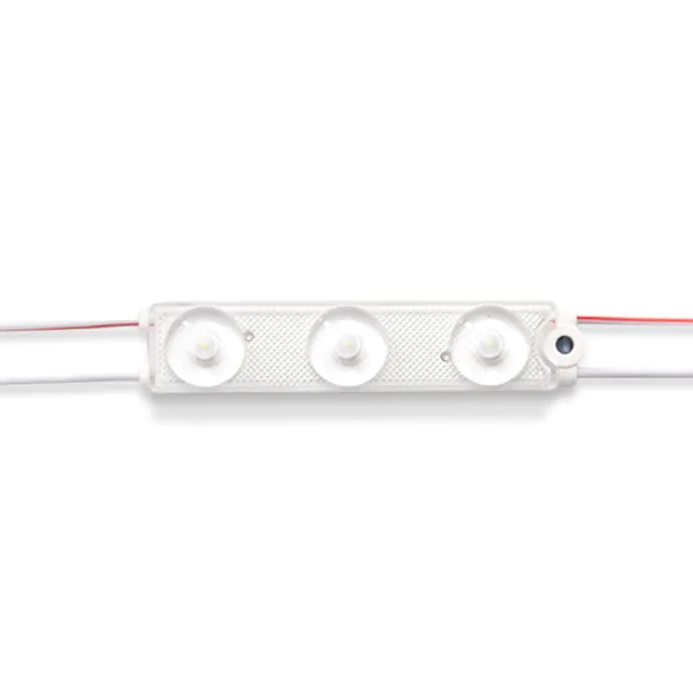Introduction: Comprehensive Analysis of LED Modules
When it comes to modern lighting solutions, a comprehensive analysis of LED modules is essential for understanding their definition, classifications, performance, and practical applications. LED modules have become the backbone of energy-efficient lighting, used across industries from consumer electronics and automotive lighting to architectural and street illumination.
This guide provides a detailed breakdown of LED modules, covering their definition, types, selection criteria, and application guide. By the end, you’ll have a clear understanding of how to evaluate LED modules for your specific needs.
What Are LED Modules?

An LED module is a self-contained unit that integrates multiple light-emitting diodes (LEDs) along with supporting components such as lenses, heat sinks, and circuit boards. These modules are designed for ease of installation and consistent light output, eliminating the need for users to handle bare LED chips.
Key Features of LED Modules

- High energy efficiency compared to traditional light sources
- Compact size with versatile mounting options
- Extended lifespan (50,000–100,000 hours in quality designs)
- Low heat generation due to integrated thermal management
- Wide range of color temperatures and brightness levels
- Compatibility with constant voltage or constant current drivers
External Resource: Energy.gov on LED Technology
Types of LED Modules
A comprehensive analysis of LED modules requires understanding the different types available. These modules are classified based on shape, power supply requirements, and intended application.
1. By Shape and Structure
- Linear LED Modules: Long, narrow boards ideal for cove lighting and under-cabinet installations.
- Circular LED Modules: Designed for downlights, spotlights, and ceiling lamps.
- Flexible LED Modules: Built on bendable PCBs, used for signage and architectural designs.
- Matrix or Panel LED Modules: Grid arrangements providing uniform illumination, common in displays and backlighting.
2. By Power Supply
- Constant Voltage Modules (12V/24V): Popular in signage and decorative lighting, requiring stable voltage drivers.
- Constant Current Modules: Used where uniform brightness and longer lifespan are required.
3. By Application
- General Illumination Modules: For residential, office, and commercial spaces.
- Signage Modules: Waterproof, compact modules for light boxes and channel letters.
- Automotive Modules: Integrated into headlights, taillights, and interior lighting.
- Specialized Modules: UV LED modules for sterilization, horticulture modules for plant growth, etc.
Selection Guide for LED Modules
Choosing the right LED module involves analyzing several technical and practical factors.
1. Light Output and Luminous Efficacy
- Check the lumens per watt (lm/W) rating. Higher efficacy means more light for less power.
2. Color Temperature and CRI
- Warm white (2700–3000K) for cozy indoor environments
- Neutral white (4000–5000K) for offices and retail
- Cool white (6000K+) for industrial and outdoor applications
- Color Rendering Index (CRI 80–95) for accurate color representation
3. Thermal Management
- Modules with aluminum PCBs and heat sinks ensure a longer lifespan.
- Overheating significantly reduces LED performance.
4. Power Compatibility
- Verify whether the module requires constant voltage or constant current.
- Match with compatible LED drivers to avoid flickering or premature failure.
5. Lifespan and Reliability
- Look for LM-80 certification and L70 ratings to verify longevity.
6. IP Rating and Environmental Conditions
- IP20 for indoor use
- IP65/IP67 for outdoor or damp locations
7. Brand and Quality Standards
- Choose modules tested under CE, RoHS, or UL certifications.
Applications of LED Modules
The comprehensive analysis of LED modules is incomplete without looking at their applications across industries.
1. Residential Lighting
LED modules are used in ceiling fixtures, under-cabinet lights, and decorative strip lighting, offering efficiency and style.
2. Commercial Lighting
Retail spaces, offices, and hospitality environments benefit from flexible LED module designs that enhance customer experiences.
3. Outdoor and Street Lighting
High-output LED modules are installed in streetlights, floodlights, and parking lots for safety and reduced energy consumption.
4. Automotive Applications
Modern vehicles rely on LED modules for headlights, taillights, interior accent lighting, and dashboards.
5. Signage and Displays
Waterproof LED modules illuminate billboards, channel letters, and digital displays.
6. Specialized Uses
- Horticultural lighting supports plant growth cycles.
- UV modules are used in sterilization and medical equipment.
- Marine lighting requires corrosion-resistant LED modules.
Advantages of LED Modules
- Energy Efficiency: Up to 80% energy savings vs. incandescent bulbs.
- Longevity: Reduced replacement costs due to extended lifespan.
- Compact Design: Ideal for modern architectural integration.
- Environmental Friendliness: No mercury, reduced carbon footprint.
- Versatility: Adaptable across industries and design styles.
Challenges and Limitations
Even with their benefits, LED modules face certain challenges:
- The initial cost is higher than that of traditional light sources.
- Heat management issues in poorly designed modules.
- Driver compatibility requires technical knowledge.
- Light quality variance across cheap, uncertified products.
Future Trends in LED Module Technology
As innovation accelerates, expect the following trends:
- Smart LED modules integrated with IoT controls.
- Human-centric lighting that adjusts color temperature for circadian rhythms.
- Miniaturized and micro-LED modules for high-resolution displays.
- Sustainable designs with recyclable materials and reduced rare-earth elements.
Practical Buying Tips for LED Modules
- Always cross-check product datasheets.
- Match driver specifications with module requirements.
- Invest in certified modules for long-term performance.
- Consider application-specific modules (e.g., waterproof for outdoor use).
- Factor in maintenance and replacement ease.
Conclusion
A comprehensive analysis of LED modules reveals that these compact yet powerful lighting solutions are revolutionizing industries through efficiency, versatility, and durability. Whether you’re outfitting a home, designing retail signage, or engineering automotive lighting, choosing the right module involves careful consideration of type, power supply, efficiency, and application environment.
By following this selection and application guide, you’ll ensure your investment in LED modules delivers maximum performance, longevity, and value.




